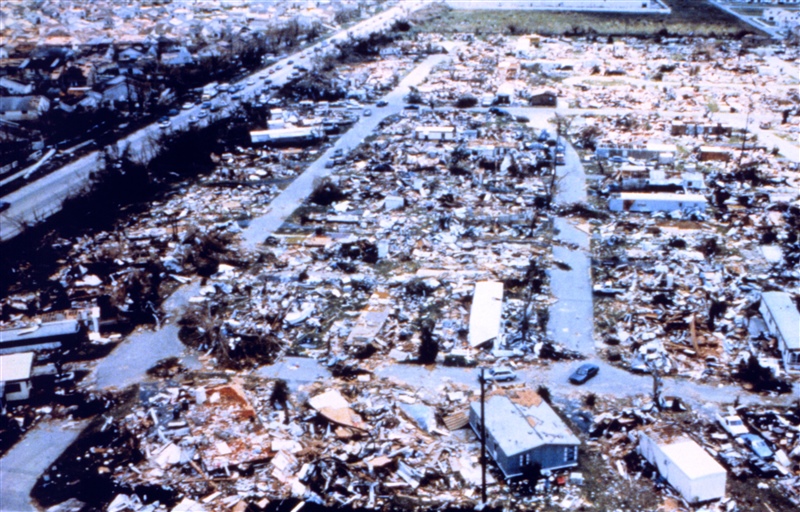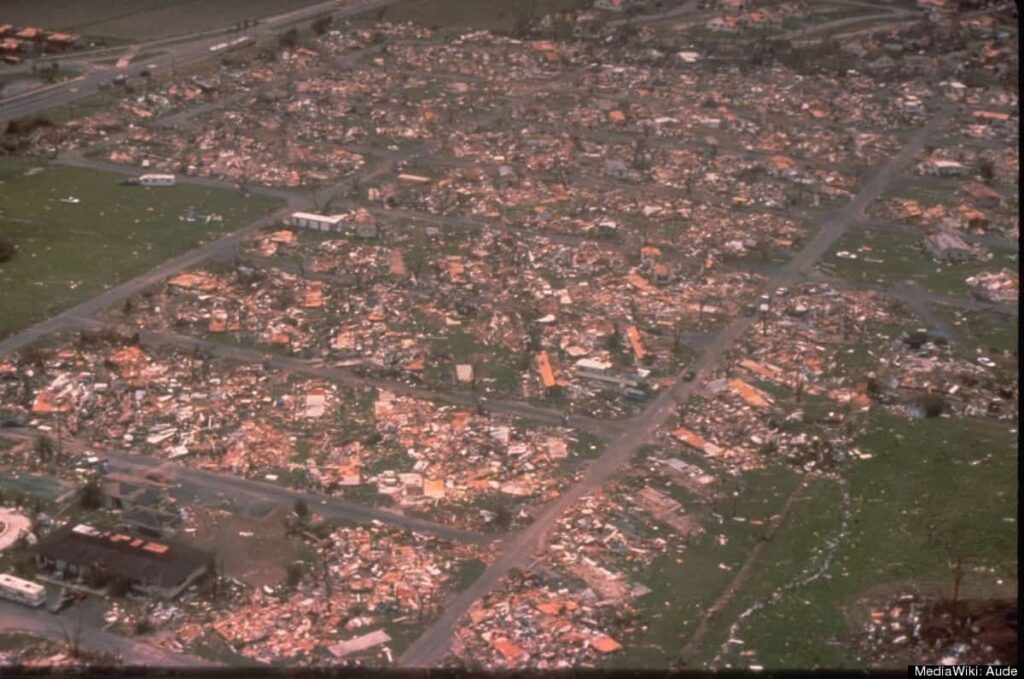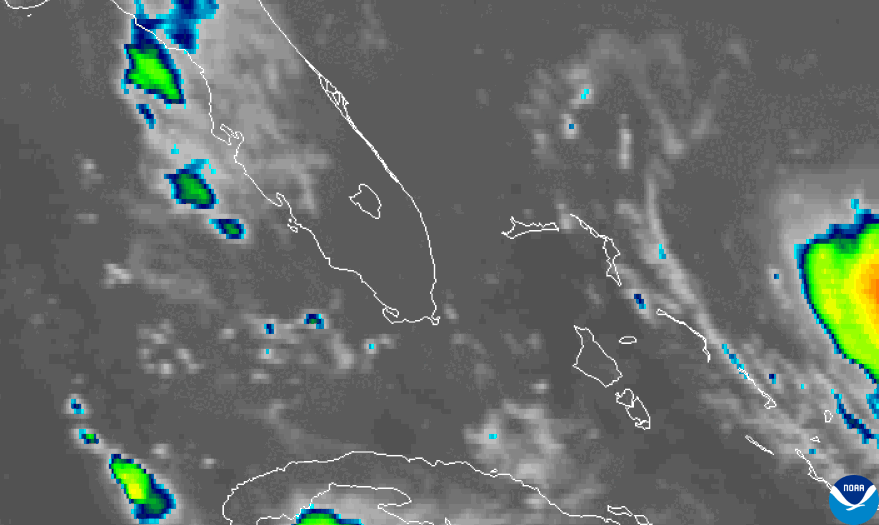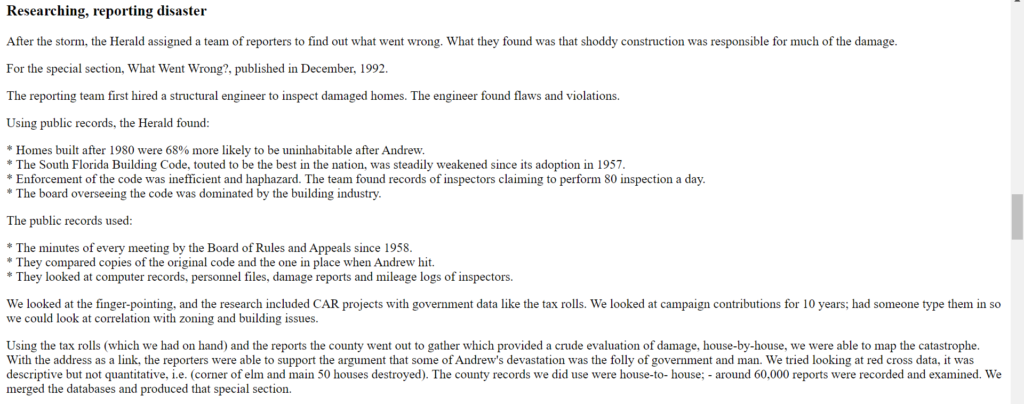Before Hurricane Katrina, Hurricane Andrew was the costliest.
Hurricane Andrew impacted Southern Florida from August 16 to 28 in 1992. It was considered one of the strongest hurricanes to impact the United States at the time. The destruction of many buildings in the area was massive, as it ultimately cost over $26 billion dollars in damages. Residential homes were wiped out, commercial buildings taking extensive damage and much of power was wiped out. News outlets recall their own buildings being tore apart, and seeing high winds destroy miscellaneous items outside.
So how did the local media decided to approach Hurricane Andrew, in order to benefit the community that they were located in?
Miami Herald was one news outlet that decided to take a deeper look into how the community was prepared for Hurricane Andrew. They covered both the during and the aftermath of Hurricane Andrew. Since there was no power, employees delivered papers to residents, and worked with other news outlets to keep residents informed about the hurricane.
Miami Herald also investigated the aftermath of Hurricane Andrew by looking at public records and any other materials available to them. Florida's building codes were one of the strongest at the time. They concluded that many homes and buildings were poorly constructed, and violated Florida's building codes. Enforcement of these codes was poorly done by inspectors, and the consequences of these mistakes were weak homes unable to withstand a hurricane. This led to Florida setting one of the strongest building codes enforced to protect against future hurricanes, leading to buildings to being constructed with hurricane-resistant materials.
The Miami Herald later won the Pulitzer Prize for Meritorious Public Service in April 1993.



